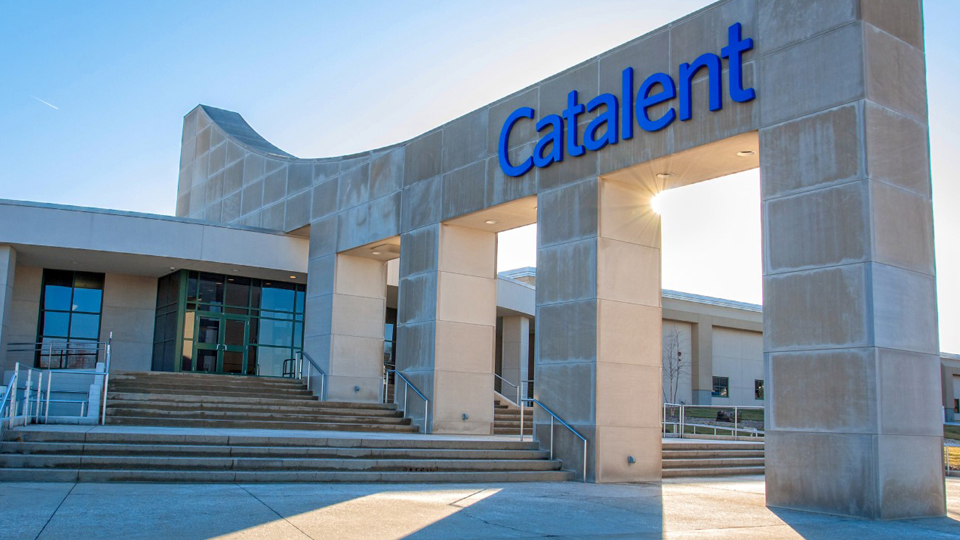Subscriber Benefit
As a subscriber you can listen to articles at work, in the car, or while you work out. Subscribe NowIt was supposed to be a “win-win”—a rare business deal that would provide a huge boost to both sides. Instead, it is turning into the acquisition that has hit big bumps, with layoffs, productivity problems and delayed earnings.
Catalent Inc., a contract drug manufacturer based in New Jersey, said Monday it would delay quarterly earnings scheduled for Tuesday until May 15, blaming productivity issues and higher-than-expected costs at three plants—including an operation in Bloomington that it bought in 2017 from medical device maker Cook Group.
Catalent said it has identified “certain potential non-cash adjustments” related to operations in Bloomington and will need more time to review the matter prior to filing earnings for its fiscal third quarter ending March 31.
The company said it expects to “significantly” reduce its fiscal 2023 net revenue guidance by more than $400 million, and expects that its income statement and balance sheet will reflect a goodwill impairment in its consumer health business of more than $200 million.
Shares of Catalent sank 26% on Monday, down $12.51, to $35.28 each in midafternoon trading.
It was the latest indication that the six-year-old acquisition was hitting rough waters. Last month, Catalent said it experienced productivity problems in manufacturing facilities in Bloomington and two other plants, in Maryland (near the BWI airport) and Brussels, Belgium.
“After conducting an internal review of the company’s manufacturing operations, the company has taken a number of measures at BWI, Bloomington, including both management and operational changes, to address the root causes of the issues identified at each site,” Catalent said in an April 14 announcement.
It was a stunning reversal of plans for the Bloomington plant. Just 13 months ago, Catalent said it would invest $350 million to expand its Bloomington operations and would add roughly 1,000 jobs by the end of 2023.
That came on top of more than 1,000 positions that Catalent has added since 2021, bringing the Bloomington workforce to more than 4,000, including both employees and workers provided by staffing agencies.
The expansion was to support the growth of the company’s biologics pipeline by producing bioreactors, developing syringe filling lines and adding vial capacity. Catalent operates a 1 million-square-foot biologics development and manufacturing facility in Bloomington.
But seven months after that announcement, Catalent said it was laying off 400 workers as the pandemic began to ease.
“We appreciate every Catalent workers’ contributions and are offering severance and job transition support to all impacted employees,” Catalent said last December.
The uneven operations and employment levels at Catalent’s Bloomington operations are at odds with the company’s intentions when it bought the operation from Cook seven years ago.
The operation, then known as Cook Pharmica LLC, was founded in 2004 as a division of the Cook Group. For the 12 months ended June 30, 2017, Cook Pharmica generated $179 million in revenue.
At the time of the acquisition in 2017, Catalent officials hailed the Bloomington operation for its “extensive biomanufacturing capacity and deep expertise” in a range of business operations, and said it “perfectly augments” Catalent’s expertise in cell line engineering, prefilled syringe, and other operations.
“The complementary biologics development, biomanufacturing and fill-finish capabilities of Catalent and Cook Pharmacia will provide biopharmaceutical firms with a single, integrated partner supporting a wide range of clinical and commercial needs,” John Chiminski, then-CEO of Catalent, said in September 2017.
Today, Catalent officials are asking investors to be patient as they address the problems in Bloomington and elsewhere.
“We are confident that our recent operational challenges are temporary and addressable,” CEO Alessando Masselli said in a statement Monday, “and we are working intensively to return to our historic productivity levels.”
Please enable JavaScript to view this content.

